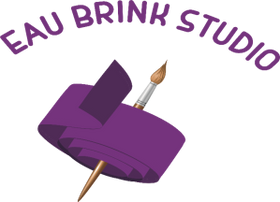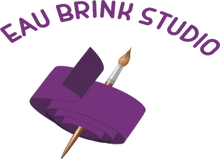Navigating Sewing Machine Needles: The Key to Successful Stitching
Introduction
In the vast and creative world of sewing, the humble needle plays a pivotal role in achieving impeccable stitches and professional-quality projects. Many sewing enthusiasts, whether beginners or experienced crafters, often overlook the significance of using the right needle for the right fabric and project. In this blog, we'll delve into the fascinating realm of sewing machine needles, exploring the various types available and highlighting the critical importance of selecting the appropriate needle to achieve flawless results.
The Needle Palette: A Spectrum of Options
Just as a painter chooses the right brush for a specific stroke, a seamstress must select the right needle for each sewing endeavour. Sewing machine needles come in an array of types, each designed to suit specific fabrics and tasks. Let's take a closer look at some common needle types and their applications:
-
Universal Needles: As the name suggests, these needles are versatile and work well with various woven and knit fabrics. They are great for general sewing and offer a balanced performance on different materials.
-
Ballpoint Needles: Designed specifically for knits and stretch fabrics, ballpoint needles have a rounded tip that slides between the fibers instead of piercing them. This prevents snags and runs in the fabric.
-
Sharp Needles: Ideal for tightly woven fabrics like silk, cotton, and taffeta, sharp needles have a slim, pointed tip that easily penetrates delicate fabrics without causing damage.
-
Jeans/Denim Needles: With a strong, thick shaft and a sharp point, these needles are perfect for heavyweight fabrics like denim, canvas, and twill.
-
Quilting Needles: Featuring a tapered point, quilting needles are designed to smoothly pierce multiple layers of fabric, making them suitable for quilting projects.
-
Embroidery Needles: These needles have a larger eye to accommodate embroidery threads and prevent thread breakage, making them essential for intricate embroidery work.
Selecting the Right Needle: A Stitch in Time Saves Nine
Using the correct needle for a particular fabric and project can make a world of difference in the final outcome. Here's why it matters:
-
Fabric Preservation: The right needle reduces the risk of fabric damage, preventing snags, runs, and unsightly holes that can ruin your hard work.
-
Stitch Quality: A mismatched needle can lead to skipped stitches, uneven tension, or puckering. Choosing the right needle ensures smooth, even stitches and a professional finish.
-
Thread Protection: An appropriately sized needle prevents friction between the needle and thread, reducing the chances of thread fraying or breaking during sewing.
-
Project Success: Whether you're sewing garments, home decor, or crafts, using the right needle enhances the overall appearance and durability of your creations.
-
Time and Effort Savings: By avoiding stitching mishaps caused by improper needle selection, you save time on rework and frustration.
Guidelines for Needle Selection
To make the most of your sewing projects, keep these guidelines in mind when choosing a needle:
-
Fabric Type: Consider the thickness, weave, and stretch of your fabric. Delicate fabrics require finer needles, while heavy fabrics demand stronger needles.
-
Project Type: Different projects have different requirements. Quilting, embroidery, and garment construction each necessitate specific needle types.
-
Needle Size: Needles come in various sizes denoted by numbers. Lower numbers indicate finer needles, suitable for lightweight fabrics, while higher numbers are for heavier fabrics.
-
Thread Type: Thicker threads require larger needle eyes, preventing friction and breakage during sewing.
Conclusion
The world of sewing is a tapestry woven with creativity and precision. In this intricate art, selecting the right needle for your sewing machine might seem like a minor detail, but it's a detail that can elevate your work from ordinary to extraordinary. By understanding the different types of sewing machine needles and their applications, you unlock the potential to create flawless stitches, showcase your skills, and craft projects that stand the test of time. Remember, the next time you sit down at your sewing machine, the needle you choose can truly make or break your masterpiece.





Leave a comment